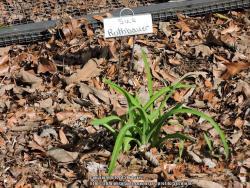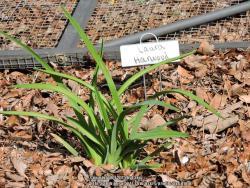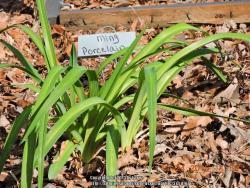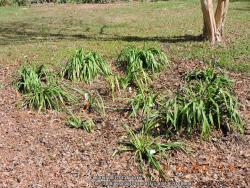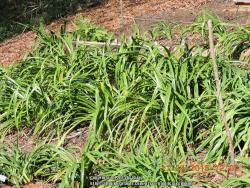I decided to start TWO threads, because I inspected all my registered daylilies today and was surprised and also disappointed by those that did or did not have rust. I would love to hear from others as to which daylilies YOU have/had that had rust show up on the foliage. Many in the database don't mention the rust resistance, so I have no way of knowing which cultivars could harbor rust. My cultivars showing some (or a lot of rust) are the following :
Tet daylilies that showed rust:
Get Jiggy had rust which I would estimate to be a rust rating of 2.5 -3.5.
Marilyn Morss Johnson had rust. I'd estimate the rust amount to be 3.0-4.0. I was disappointed at this, as I love this plant. It is definitely rust susceptible!
Winter Rainbow also had rust. It is probably just as bad as Marilyn Morss Johnson with a possible 3.0-4.0 rating.
Mal show rust. I'd guess about a 3.0 rust rating.
Neon Rainbow probably has a 3.0 rust rating. I also noticed that it went from 3 fans down to 1 fan. Not sure what is up with that. It is a sev, so maybe that explains it?
Raspberry Beret - This one was a rust bucket this past Spring. But surprisingly, the rust rating I'd give it today would be a 2.0. This was unexpected as I was actually thinking of ditching that cultivar because I'd honestly say it was a 5.0 rust rating 6 months ago.
Dynasty Pink had a fair amount of rust, but the rust looked like it was dying. So I gave this one a 1.5 - 2.0 rust resistance rating.
Spiny Sea Urchin had quite a bit of rust. I'd rate it a 3.0.
Kipling I would rate a 2.5-3.0 for rust resistance. Disappointing to see at this time.
All Fired Up had quite a bit of rust too. I'd say a 2.5 -3.5 rust resistance rating.
Now for dips:
Planet Max - I was disappointed to see a fair amount of live rust on the foliage of this one. I'd rate it a 2.5-3.0 rust resistance rating.
Lillian's Thin Ice had some rust. I'd say a 2.5 rust resistance rating.
Beautiful Edging was another disappointment. I had read that it had a 1.4 rust resistance rating. Looking at the foliage today, I'd have to give it a 2.0-2.5 rating.
Persian Pattern had some rust. I'd say a 1.5 - 2.0 rust resistance rating.
Fol de rol had quite a bit of rust. I'd say a 3.0 - 3.5 rust resistance rating. With it's thin leaves, I was not expecting it to show that much rust. Disappointed to see the rust on this one!
I have 24 dips and 25 tet registered cultivars. Most I acquired because of their rust resistance. So 10 of the tets and 5 of the dips show more rust than I wanted to see on the foliage.
I am also going to also do a thread asking you to post your rust resistant cultivars. This list is of most interest to me. I hope you will consider adding your cultivar observations to these 2 threads. Thank you in advance!

I truly hope others will join in and list theirs, too. Since I garden organically, I really depend on reading about which cultivars tend to show rust and which ones prove to be highly rust resistant.
By the way, all of these cultivars are planted in a raised bed together, so they are exposed to the rust of their neighboring plants.
This is the other thread of my rust "resistant" cultivars:
The thread "Which cultivars appear to exhibit rust resistance in your garden?" in
Daylilies forum

